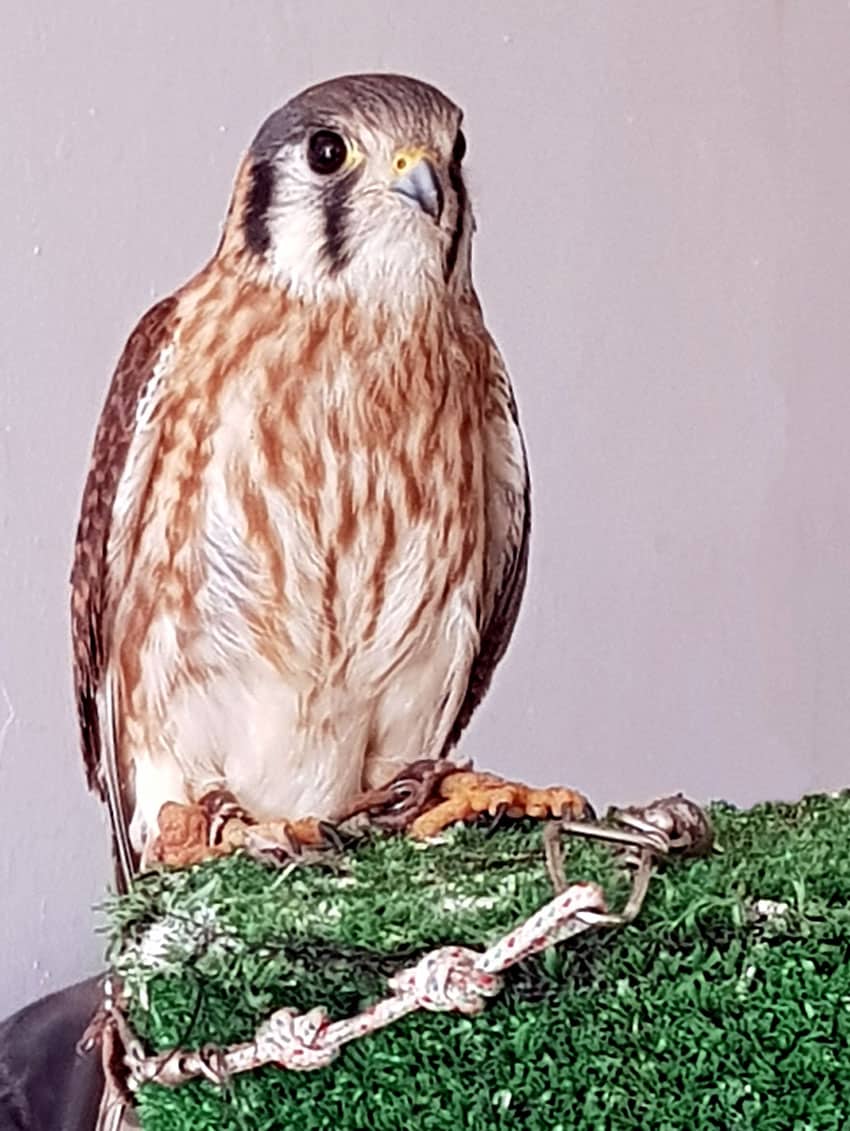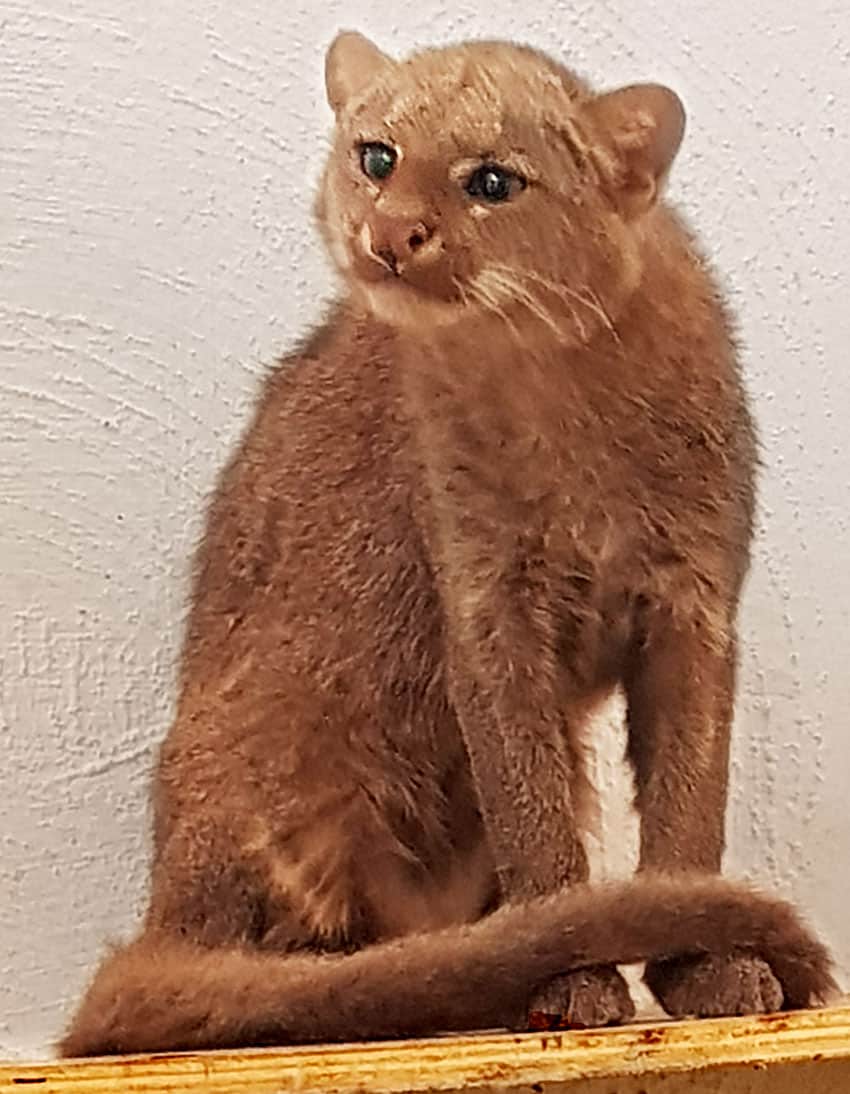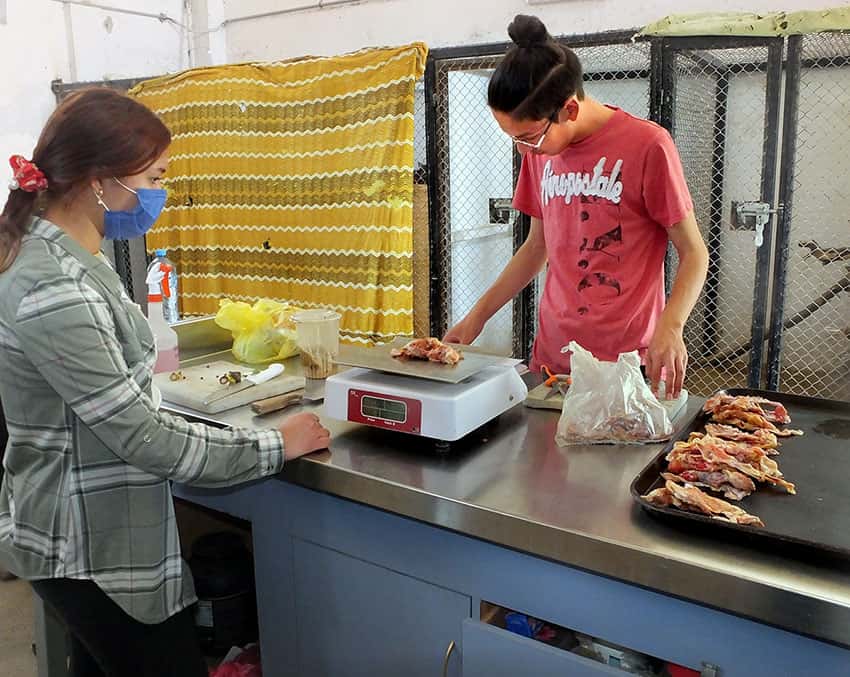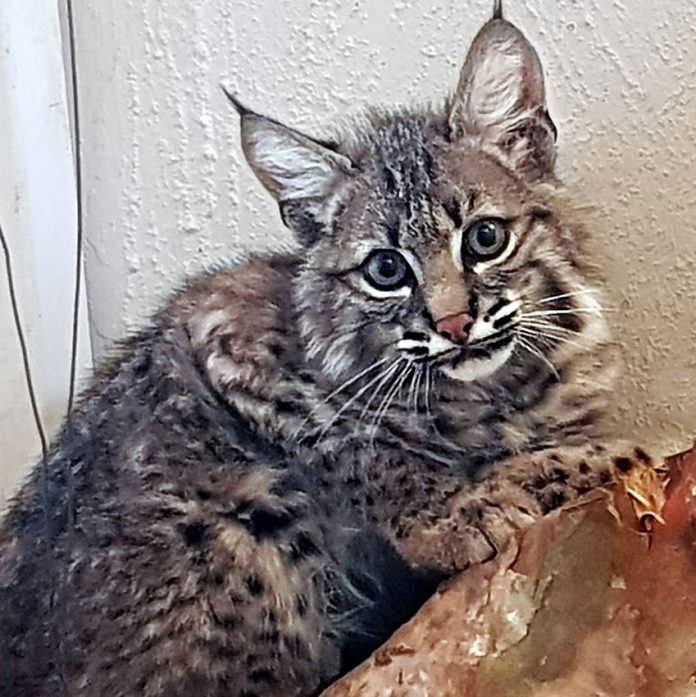A few years ago, Mexico had a very fine national wildlife rescue service: CIVS, as it is known in Spanish. It had centers all over the country where the police, customs officials and firefighters could turn in mistreated or illegally trafficked exotic animals — anything from jaguars and crocodiles to tarantulas and macaws — so that they could be returned to the wild or cared for by professional vets and biologists.
Ordinary citizens could also call CIVS if they happened to find a puma with a broken leg in their backyard.
All this changed a few years ago when the entire chain of CIVS centers was shut down and their highly skilled staff members were either let go or given new jobs unrelated to rescuing animals.
This situation worried me a lot. What would be the fate of the thousands of distressed birds, mammals, reptiles and invertebrates in need of help? Fortunately, Mexicans are inventive and never too trusting of anything run by the government.
“What is Guadalajara doing about this?” I asked environmentalist and tarantula rescuer Rodrigo Orozco, who assured me that animal advocates in this area were just as concerned as I was and had already taken steps to deal with the problem.
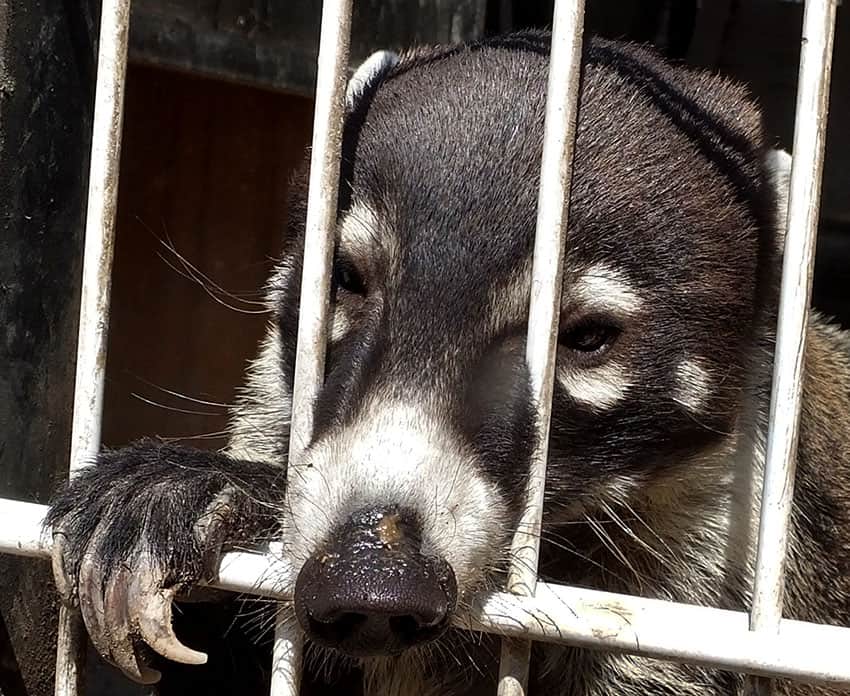
Orozco told me that there are now three locally managed wildlife rescue centers in greater Guadalajara and offered to take me to each of them. In previous articles, I have reported on the centers at Agua Azul and Villa Fantasía, and a few days ago, I spent a pleasant morning at the new digs of the recently organized wildlife rescue service in the little town of Tlajomulco, located just south of the Guadalajara metropolis.
The new digs were not quite what I expected. The external walls were dismal, foreboding and in need of a paint job.
“Don’t let the looks fool you,” said Alberto Cayo Cervantes, the new director of the rescue center. “These facilities were previously an abattoir, of all things. They may still look like a prison or a factory, but we just moved in here and are in the process of transforming this place into the exact opposite of what it was before.”
I suggested the place might need a limpia (a sort of Mexican exorcism), and Cayo assured me that that had already been taken care of.
As I began to tour the place, I realized that Cayo’s team had really been handed a magnificent gift by the Tlajomulco municipality: the former slaughterhouse included lots of buildings and lots of land, with plenty of room for the highly specialized enclosures needed to house and rehabilitate the great variety of creatures that end up in trouble after they come into contact with our species.
“De veras [truly],” said Cayo, “it was truly a happy surprise for me when the municipality of Tlajomulco contacted me and said they wanted to set up an animal rescue center and that they had the funds to do it. It was like a miracle because we’re more used to governments caring nothing about wildlife.”
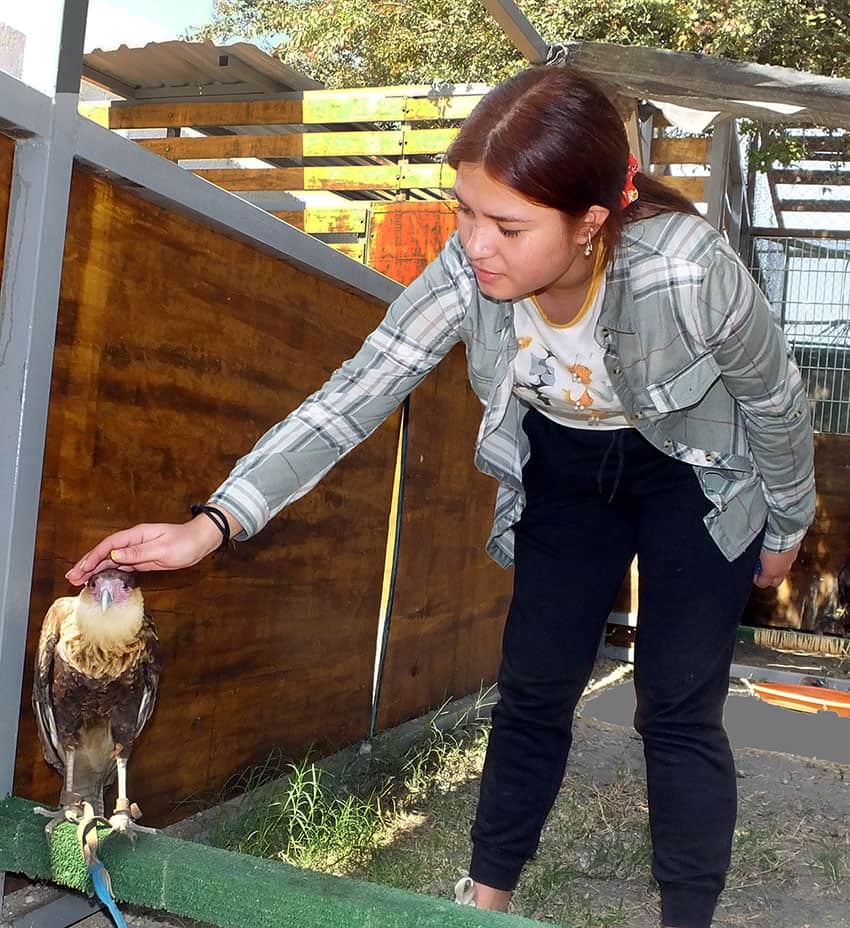
To me, it seemed equally miraculous that the officials of Tlajomulco had not appointed a political flunky to run their new center but had chosen a true professional with tons of experience and both feet firmly planted on the ground.
More good news is that the new center will also have funding for furnishing and operating both a clinic and a research lab. The facilities will also be given permanent status in Tlajomulco’s political structure, which means that they cannot be abandoned and forgotten when the next change of administration comes along.
While I was talking to Cayo, he invited me to take a peek inside a big cardboard box on his desk. I did so and discovered an enormous snake curled up inside it.
“The Guadalajara police just brought us this. It’s an alicante [an indigo snake], and it was being illegally shipped to somebody in the big city.”
We wandered out of Cayo’s office and came to a long row of newly built cages, many of which were covered with large sheets of canvas. I peeked inside one of them through a small hole. In the corner was a beautiful lynx, which immediately showed me its teeth.
“We keep many of our animals in covered cages because we don’t want them to see people passing by or to get used to us. We received this lynx three months ago from a woman who said a mother lynx and its baby had somehow made their way into her rancho near San Isidro Mazatepec.
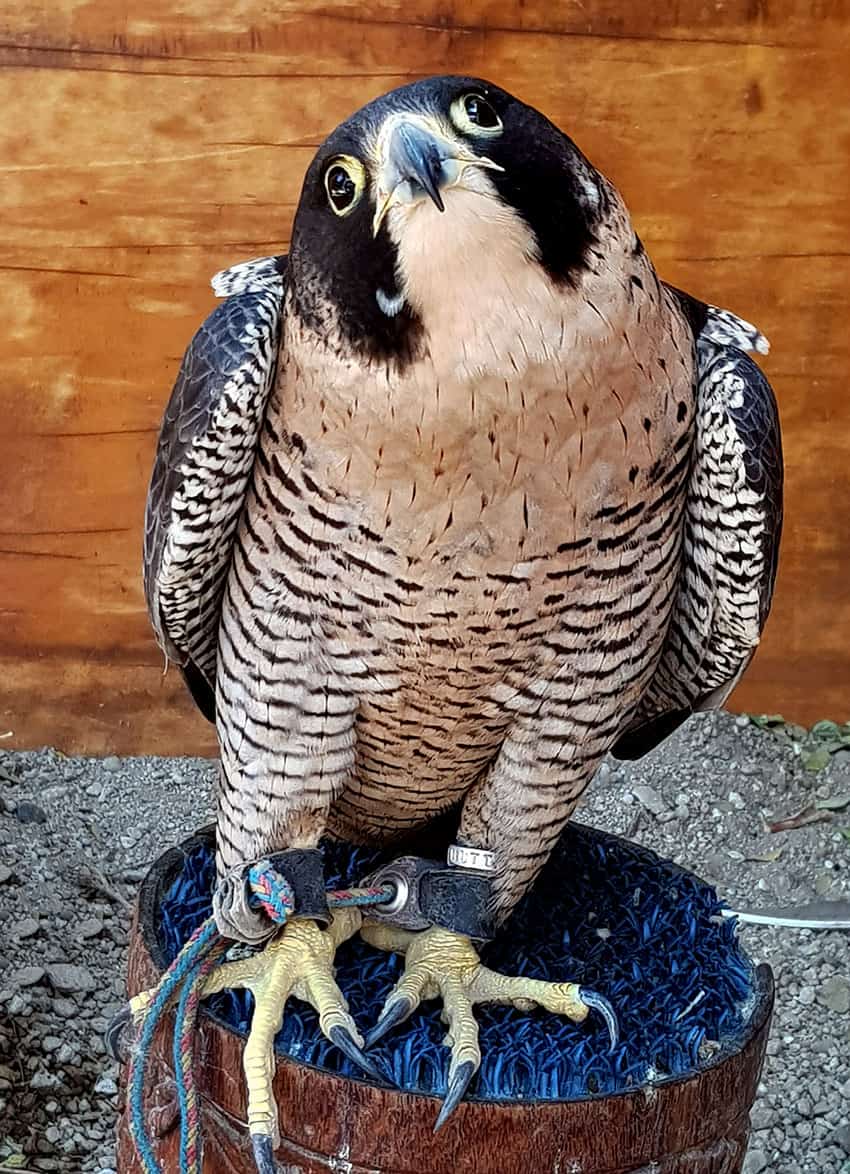
“Naturally, there were lots of dogs there, which scared off the mother and then surrounded the cachorrito [cub]. Fortunately, the ranch owner was able to save it, and when she brought it to me it weighed only 250 grams. Now it is fully grown and capable of surviving on its own. It is presently in the second stage of its rehabilitation. During the third stage, we will move it to a very large cage where it can run and climb and move around. In a month or so, we will release it into the wild.”
Next, we came to a caracara, a big bird which, curiously, prefers walking to flying.
“When caracaras are small,” said Cayo, “it’s not unusual for one to fall out of its nest, maybe because it’s malnourished or maybe just because it’s clumsy. So people find them and they raise them by hand, and they end up calling me when they find out they can’t handle them.
“Some time ago, we had a caracara like this that had been hand-raised, and we did attempt to return it to nature. Well, only five days later somebody brought it back to us! It apparently had been doing well on its own, but the first time it spotted people, it went straight to them because it considered them a source of food. So we learned our lesson, and now we try to find zoos to take these hand-raised birds.”
After the caracara, we came upon a kestrel, a kind of falcon famous for its ability to hover in the same spot, even in still air.
“This cernícalo, as we call it in Spanish, is a female. It suffered an accident in Guadalajara and was found by somebody who tried their best to take care of it. Unfortunately, they gave the bird sausage and ham to eat. Desgraciadamente [unfortunately], this kind of food is high in sodium and not at all suitable for a bird. Of course, instead of getting better, this poor kestrel got worse.”
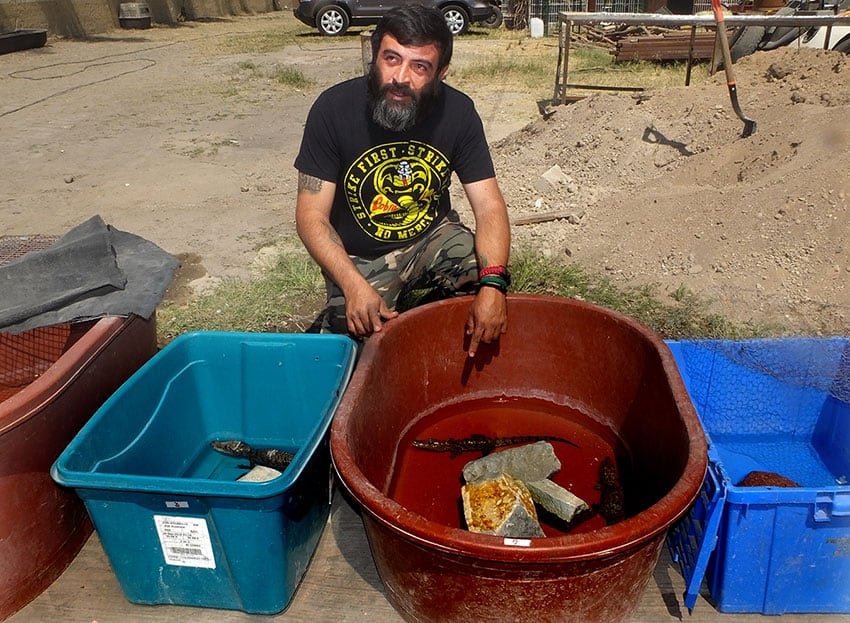
“So the people who found her realized something was wrong and called the Guadalajara Zoo, and they gave them our number. We went right out and picked it up and put it on a proper diet, and now it is doing just fine,” Cayo said. “We expect to release it in a week, and soon it will be back on its way to the U.S.A. These kestrels are migrating birds, so they have to return to their point of origin to breed. It’s okay here, but it’s nervous. It tolerates us, but just barely, and that’s what we want with this type of bird, so they’ll be able to go back to their natural habitat.”
Eventually, we came to a large enclosure, the new home of a big crocodile. I followed Cayo inside it, continuing to record his comments. It was the second time I have found myself inside a crocodile’s home, only a few feet away from the master of the house.
“Somebody was keeping this crocodile in a water fountain, and when the owner of the place had to move out, he or she simply abandoned the creature,” he said. “So the new owners discovered they had a croc in their patio! Well, they called us, and now it lives here.”
They have actually put the animal to work.
“Whenever we have to teach people about crocodiles, like for environmental education, we bring this croc along with us,” Cayo said. “It’s not exactly friendly, but it tolerates us moving it around. It’s especially helpful for training firemen, by the way. We can show them how to capture a croc, how to pick it up, for example. It’s been here with us for two years, but we can’t really let it go because we have no idea where it came from originally. As with all of our animals, we haven’t given it a name because we don’t want to get too attached. For us, it’s just El Cocodrilo Grande.”
There is, however, an exception to that rule about no names. Before I left the Tlajomulco Center, I had a chance to meet Shaka the Hawk, who has been with Cayo since 2005.
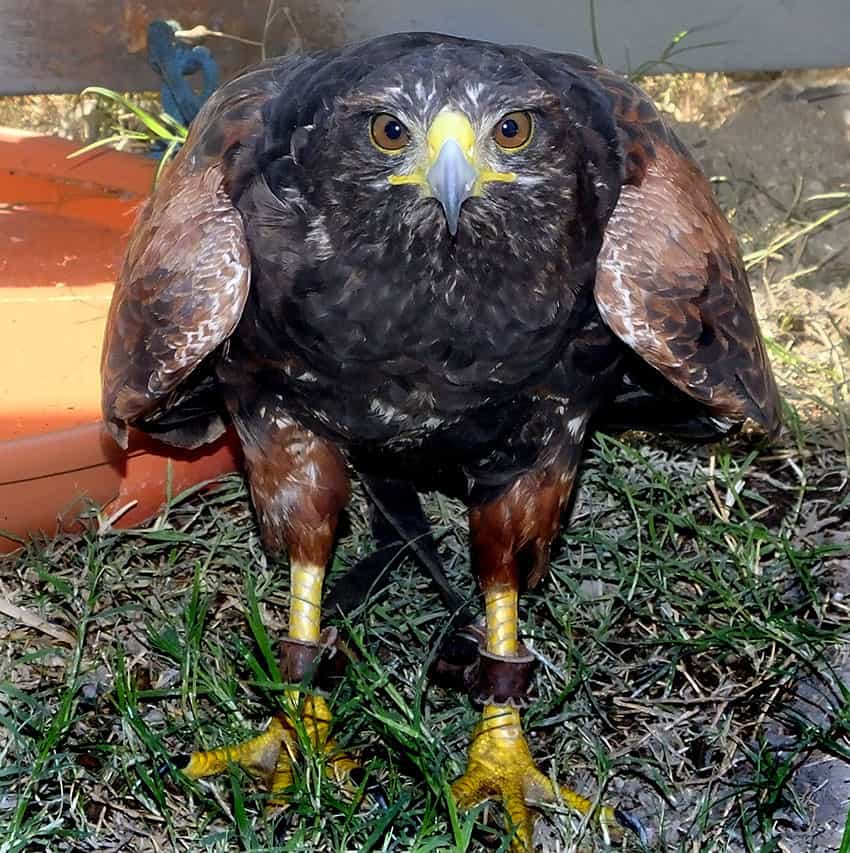
“When they brought this creature to me,” he said, “she was very tiny. I hand-raised her, and in 2006 I got a legal permit for her. Since then, she has accompanied me on all my adventures. She is my official helper for environmental education, to show children what hawks are like and why they need to be protected. Because she’s special, she does have a name: Shaka. And she is a star too. If you look for Harris hawk in the Guide to the Birds of the Primavera Forest, you will see a picture of Shaka.”
Should you find a puma on your patio, just call 911. Not only will they rescue you, they will also rescue the puma by alerting the nearest Unidad de Protección de Fauna Silvestre. If that center is at all like the three I visited in Guadalajara, you can expect a quick response at any hour of the day or night.
The writer has lived near Guadalajara, Jalisco, for 31 years and is the author of A Guide to West Mexico’s Guachimontones and Surrounding Area and co-author of Outdoors in Western Mexico. More of his writing can be found on his website.
